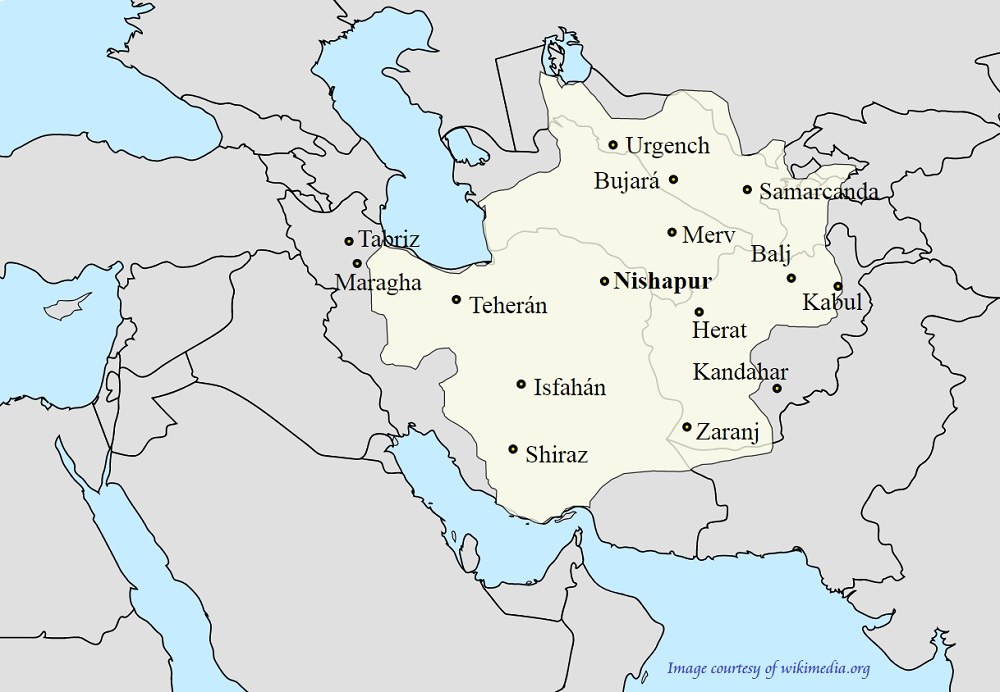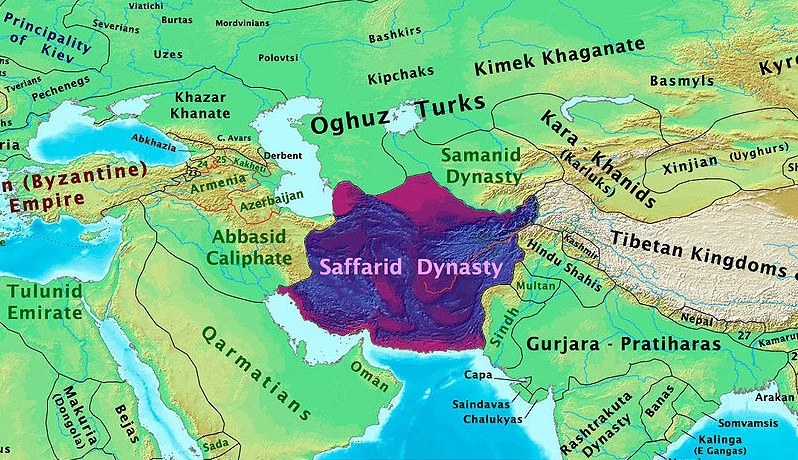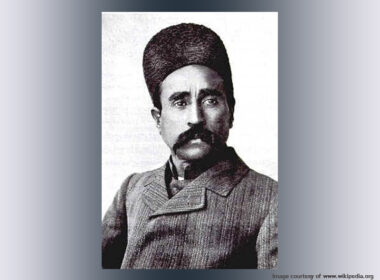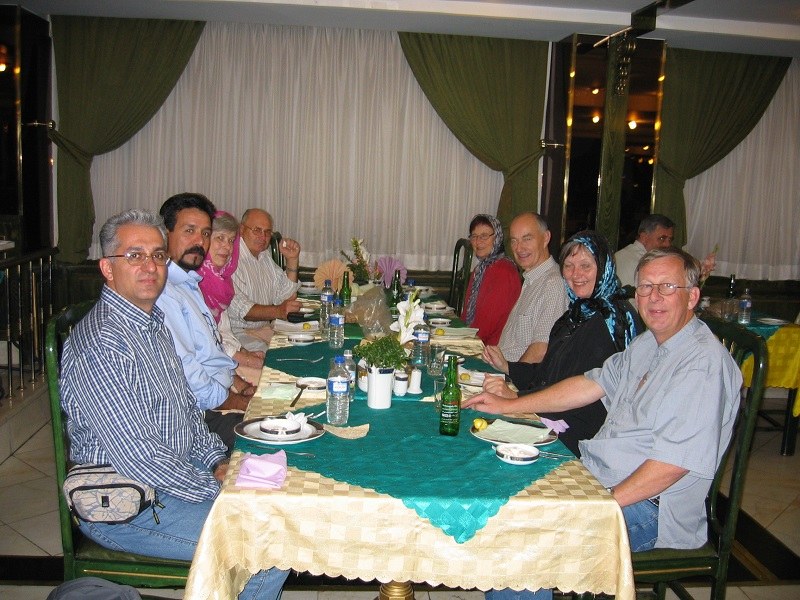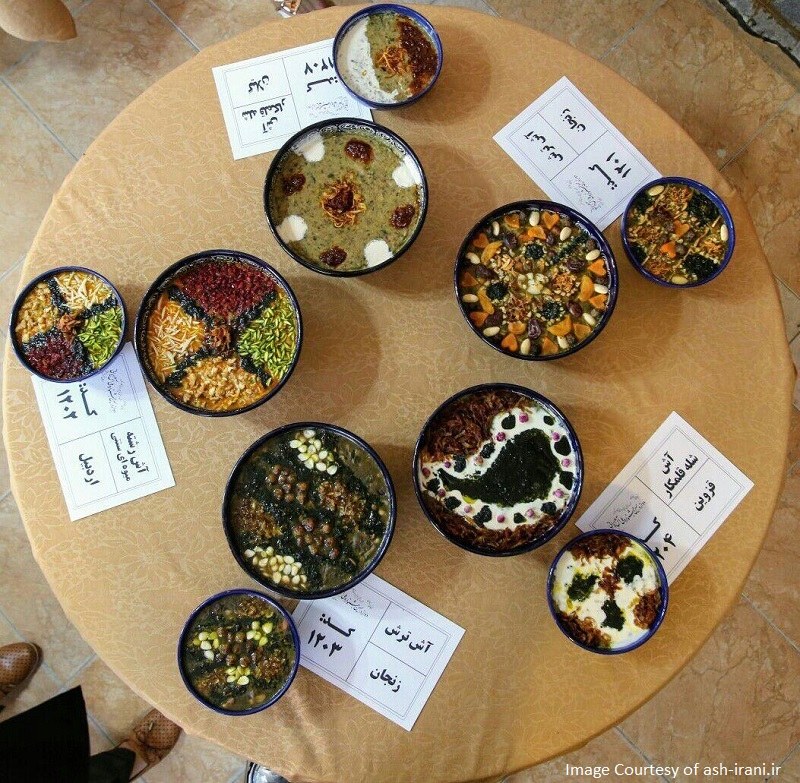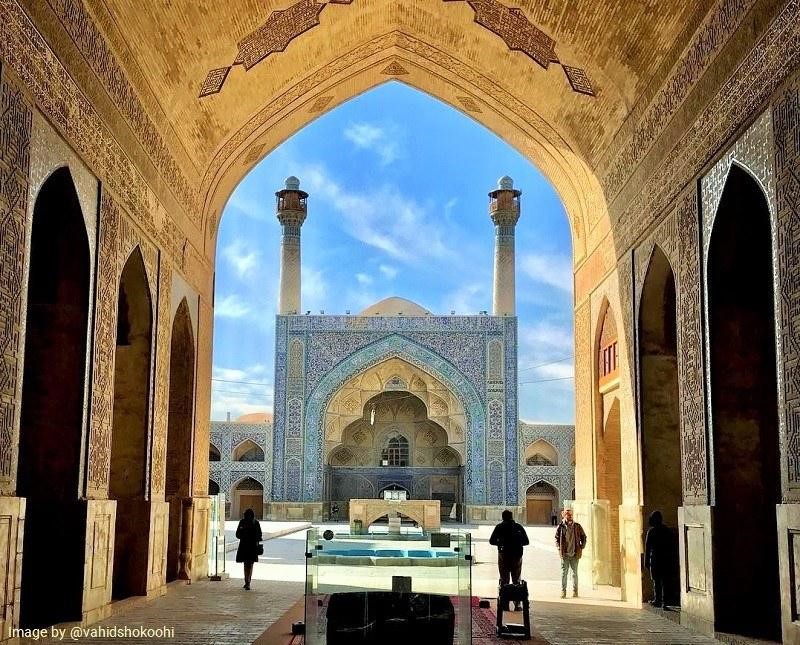
Masjed-e Jāmé of Isfahan, also known as Friday Mosque and Jame Atiq Mosque of Isfahan, is one of the best examples of religious architecture in Iran. In 2012, this mosque was added to the list of Iranian UNESCO World Heritage Sites and is considered one of the most beautiful Isfahan tourist attractions.
This magnificent building exhibits the evolution of Islamic architecture in Iran over centuries. It is a well-preserved historical monument, providing useful insight for archaeologists and history buffs to better understand Islamic architecture in Iran.
This mosque has been described as one of the best examples of Islamic architecture, serving as a unique prototype for the design of future mosques. What makes this ancient attraction unique is the penchant of artists who have bestowed a special sight in every corner. Their art can be found in Shabestan decorations, plasterwork, Iranian tilework, and tasteful calligraphy.
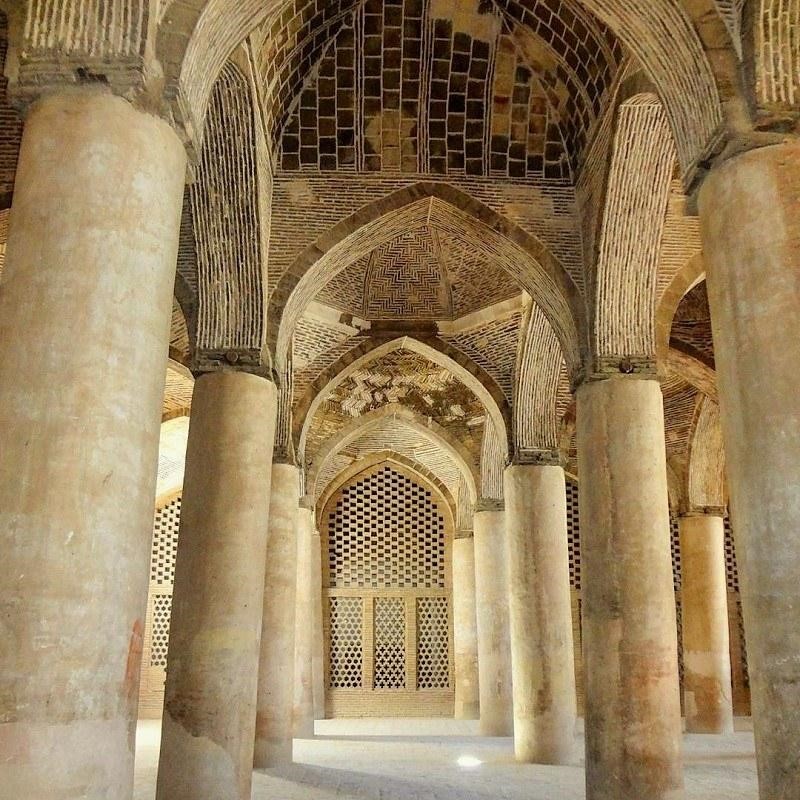
Shabestans are large halls and underground spaces where prayers are held. They are present in the traditional mosque architecture.
The Significance of Masjed-e Jāmé in the Development of Isfahan City
According to historians, before the establishment of Isfahan city, this area known as “Sepahan” was a collection of small villages that were formed around Zayandehrud. “Yavan ” was a village in the center of this collection and the center of the mosque’s construction. One of the canals that redirected the flow of Zayandeh Rood passed through this mosque.
For a long time, this stream passed through the courtyard of the mosque and later it was buried under the courtyard tiles. This mosque was the core of the urban development of Isfahan City, which grew and expanded in the subsequent historical periods and became one of the important centers of civilization in Iran. Jame Mosque of Isfahan is also a unique masterpiece among the mosques of the world.
History of Jame Mosque of Isfahan
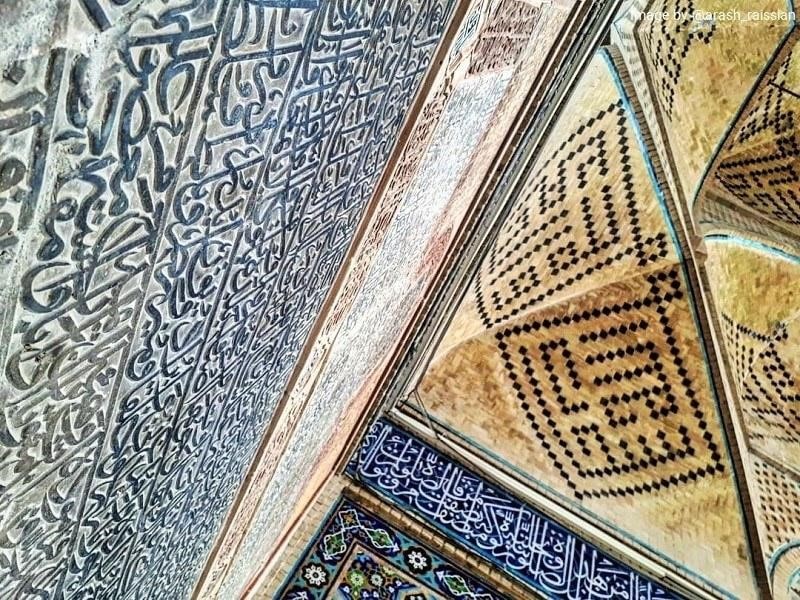
The mosque complex has reached its current state through extensive parts that have been added during different historical periods. Therefore, this building cannot be attributed to a specific historical period. Archaeological excavations and historical evidence indicate that the central structure of this mosque dates back to the pre-Islamic period.
It is said that this building was originally built as a fire temple and was used for religious rituals. The discovery of a column base decorated with Sassanid patterns is a confirmation of this hypothesis.
After the Arab invasion of Iran, which resulted in Muslim rule over Iran, this building was rebuilt and used as a mosque. The architects of the Abbasid period built the mosque with clay and bricks. Over the years, new buildings were added to the main structure of the mosque.
In the 8th century AD, a dome was built over the mosque building. The Shabestan-style Mosque became a Four-Iwan plan mosque and a model for building mosques in the Islamic world. Four-Iwan plan mosques are known as “Iranian mosques”. Jame Mosque of Isfahan can be considered a prototype of mosques in architecture.
This building is a showcase of the evolution of Iranian architecture. This mosque has architectural styles from the Abbasid to Safavid periods and plays an important role in understanding Islamic architecture in Iran.
Isfahan Jame Mosque architecture
Since Iranian architects follow a unique architectural style in design and construction, the Iranian style of mosque construction has had a significant impact on the establishment and development of Islamic architecture.
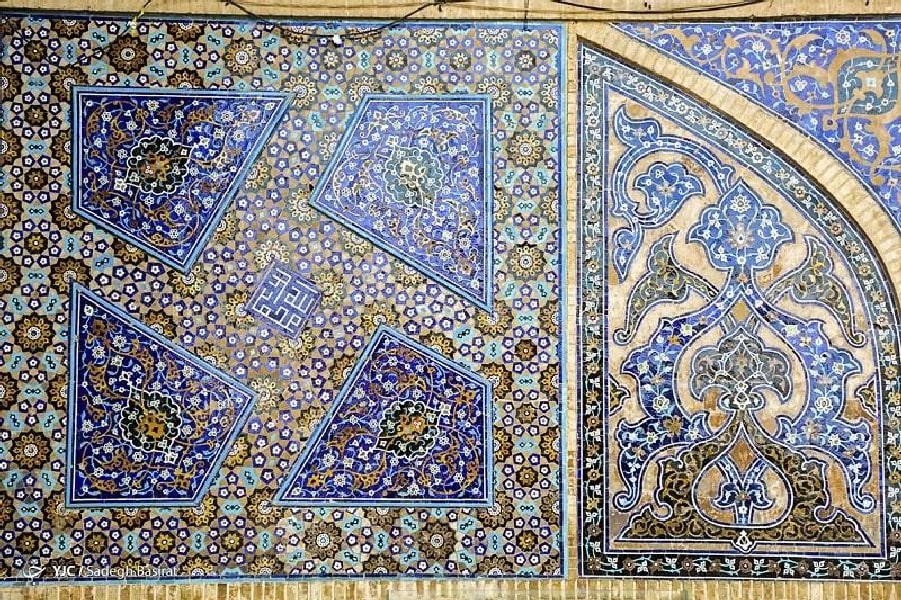
The beautiful and enchanting tilework installed at the mosque entrance has preserved their Iranian-Islamic style and created an amazing view of the mosque. In addition, there are very impressive forty-column domes and halls in this complex.
The mosque covers an area of more than 1040 square meters. Architects have used circular designs in the design of various components of this mosque. However, the pillars have a square-shaped base and are decorated with carved patterns.
In the courtyard of this mosque, there are several large stone bows, Sangab. Sangab is a large bowl that holds water meant for Wudu and drinking. The architect has designed hexagonal windows for the mosque. The decorative plasterwork above the windows is a sign of the delicate and stunning architecture of the Safavid period and helps to create a more beautiful environment.
The plasterwork decorations of the entrance hall of the mosque are a display of its historical background. These plasterwork decorations date back to the Daylamite period and have remained in this mosque since the 10th century AD.
The Domes of Masjed-e Jāmé of Isfahan
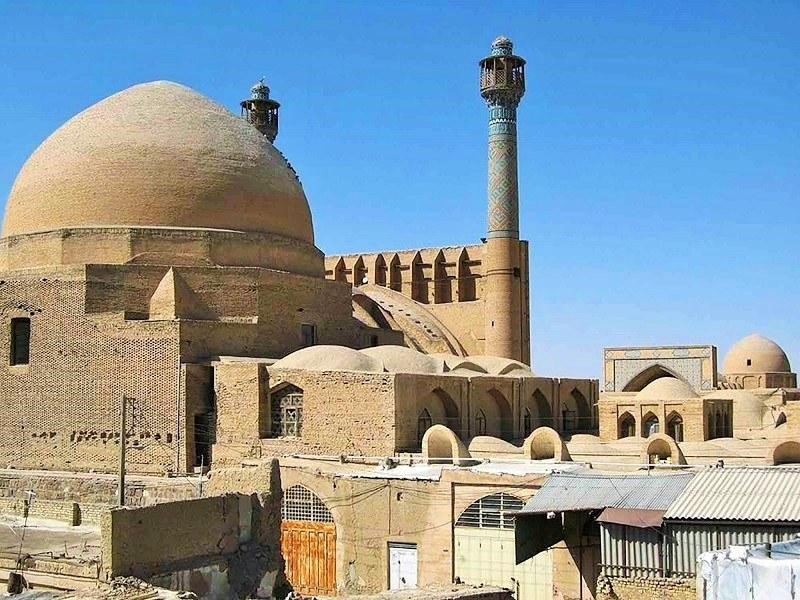
The two main domes of Taj al-Molk and Nizam al-Molk are located in the courtyard of the Mosque. Nizam al-Molk and Taj al-Molk were two rival ministers in the Seljuk court who each built a dome for this mosque.
The dome of Nizam al-Mulk was built on the south Iwan of the mosque and is one of the best examples of Seljuk architecture. Alluring designs have been created with brick and plaster materials to decorate this dome.
The Taj al-Molk dome, which is one of the masterpieces of Razi-style architecture, was built on the north side. The geometric patterns in the dome vault attract the attention of every viewer. The dome of Taj al-Mulk is smaller than the dome of Nizam al-Mulk, but it was built with more artistic elegance. Similar to the Nizam al-Molk dome, it is mounted on a cylinder and gradually transforms from a four-sided design to eight and sixteen sides. The dome of Taj al-Molk is also called the “Khagi dome” (egg-shaped).
Iwans in Jame Mosque of Isfahan
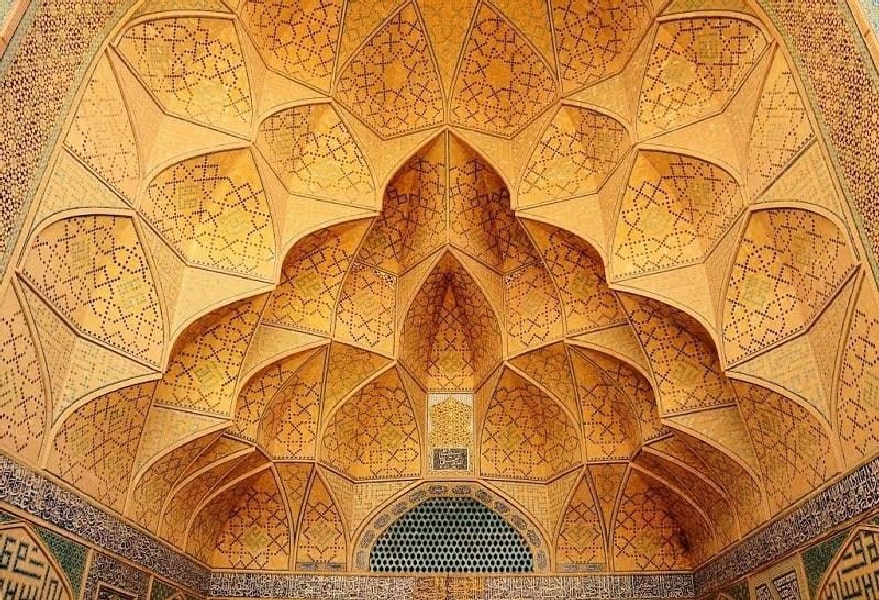
Iwan has a rectangular plan, used to refer to a hall that is open on one side. Iwans usually feature vaulted ceilings.
During different historical periods, Isfahani architects have added stunning Iwans to other sections of the mosque. These Iwans are:
- The Saheb Iwan in the southern section
- The Darvish Iwan in the northern section
- The Ostad Iwan in the western section
- The Shagerd Iwan, Shagerd Soffeh (platform) in the eastern section
Jame Mosque Decoration
Jame Mosque of Isfahan is considered one of the highlights of Iranian architecture in terms of decoration. In different historical periods, master architects have tried to embellish the facade and interior of this prime example of Iranian buildings. In the 10th century AD, the walls were covered with a layer of cob, and brickwork was used to decorate the columns. Since the use of human and animal designs was not allowed in mosque designs, geometric and abstract patterns were used in the decoration.
In the Seljuk period, perpendicular design lines and plasterwork decorations were installed in the building. In the Ilkhanid period, they mostly used nature-inspired patterns for plasterwork decorations of the altars. In the Timurid period, they used colored tilework and Rasmi-bandi (plaster molding) to hold the tilework decorations in the courtyards. The Safavids followed the Timurid decorative practices. During this period, seven-color tiles became popular for decorating the building. Muqarnas decorations in the eastern Iwan and brickwork and tilework combination in the four Iwans around the courtyard are among Safavid decorations in the mosque.
The transfer of the capital from Isfahan to Tehran during the Qajar rule led to the negligence of the Qajar kings towards this building. Brick platforms were added to it and the tomb of Mohammad-Baqer Majlesi, which is located in this mosque, was restored.
Kings and Artists in Mosque Inscriptions
Masjed-e Jāmé of Isfahan houses many inscriptions from different historical periods engraved with the names of historical figures. The inscriptions mark the names of seven kings, including Malik-Shah I, the Seljuk king, Shah Abbas, the Safavid rulers, and seven advisers, such as Khajeh Nizam al-Molk and Mohammad Hossein Khan Sadr Isfahani. Also, nine founders and stewards and 21 artists, calligraphers, and plasterwork decorators have been introduced on these inscriptions.
Jame Mosque of Isfahan Tourist Attractions
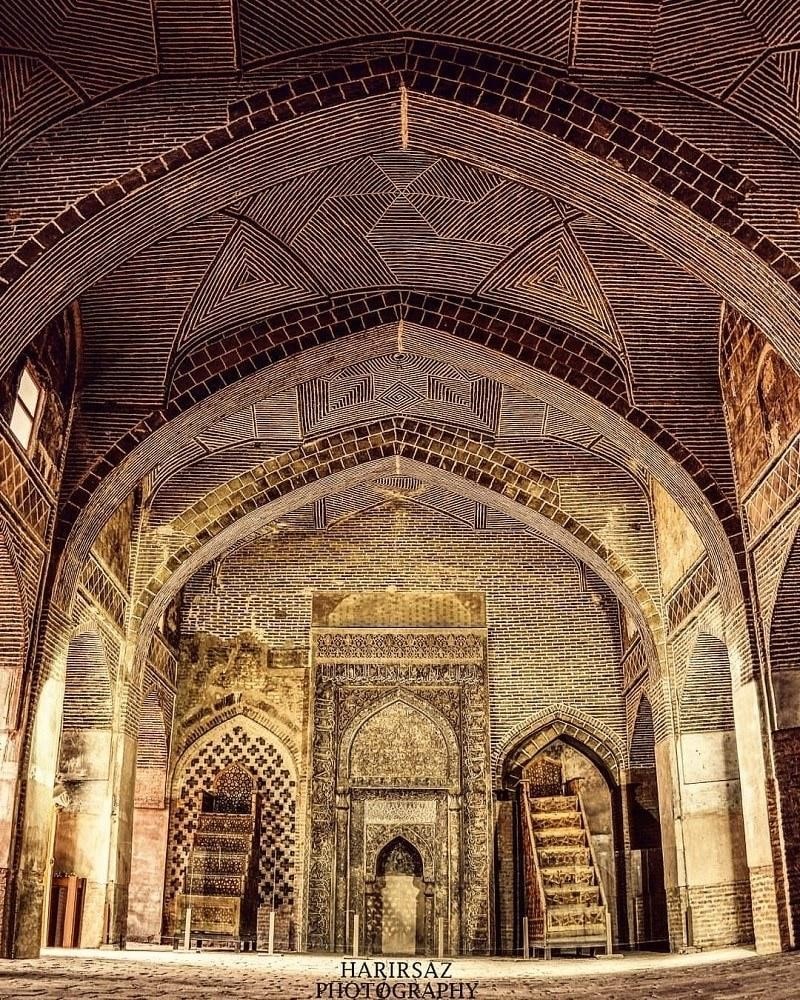
The Saheb Iwan was built in the Jame Mosque during the Seljuk period. The beautiful and detailed tilework of the Ostad Iwan dates back to the Seljuk period. The tilework, decorated with calligraphy with Thuluth and Nastaliq scripts, creates an eye-catching scene and showcases the great skills of its artists. In addition, its decorative plasterwork belongs to the Safavid period.
Carved wooden Minbars (pulpits) are one of the noteworthy features of this mosque, which can be examined from different aspects. The brick inscriptions of the dome vault of Mozafari Shabestan, which are written in Kufic script, are stunning. They, in turn, are other attractions in the complex that extend the beauty of its architecture.
Over the years, architects have added new sections to the mosque, each of which represents elaborate and beautiful architectural features. Some of these features belong to different historical periods, including the Seljuks, Abbasids, Safavids, and Dilams.
Visit Jame Mosque of Isfahan
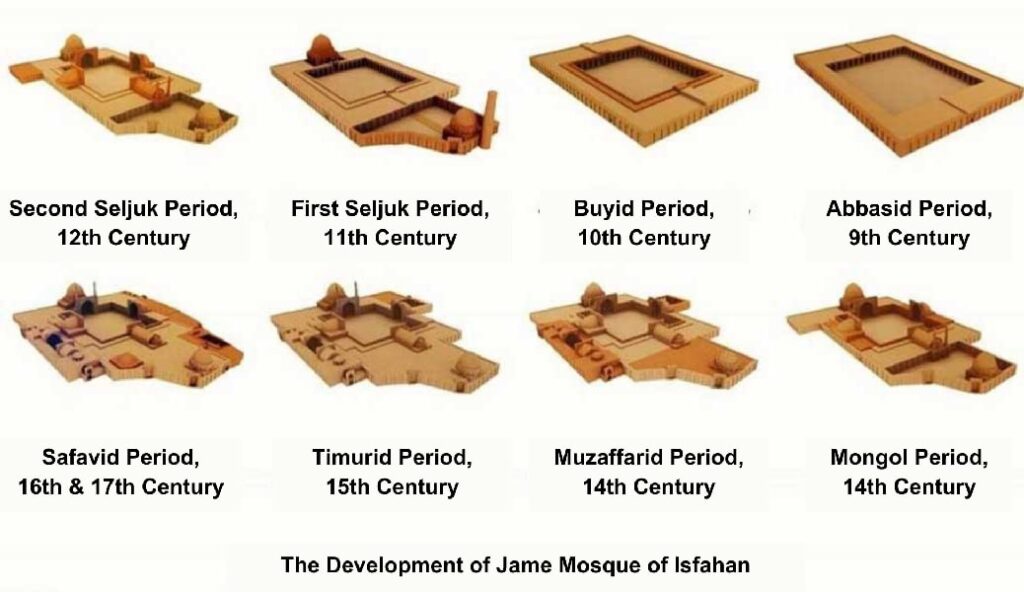
Many Iranian and foreign travelers visit this historical building every year. In this mosque, they can see Iran’s Islamic architecture at its finest.
Most Iran tours include this building in the list of their historical attractions. However, if you go to this city by yourself, be sure to visit the tourist attractions of Isfahan, especially this mosque.
Where is Masjed-e Jāmé of Isfahan?
To visit this historical mosque, just go to Qiyam Square in Isfahan and then to Allameh Majlesi Street or use the following location:
Frequently Asked Questions about Masjed-e Jāmé of Isfahan
If you do not find the answer to your questions below, you can ask your questions in the comments section of this post. We will respond to them as soon as possible.
Who built the Jame Mosque of Isfahan?
There is no exact information about who first ordered the construction of this mosque. This mosque was rebuilt many times and many buildings were added to it in different periods.
How old is Masjed-e Jāmé of Isfahan and in what year was it built?
According to the available documents, the original building of this mosque was built in 777 AD. In 846 AD, by order of Caliph Mo’tasem Abbasi, the original mosque was destroyed and a new mosque was built in its place.
What is the architectural style of Jame Mosque of Isfahan?
This mosque was renovated in different periods, But most of its changes and architecture are related to the Seljuk period.
What is meant by the design of the “Iranian Mosque” in the construction of Masjed-e Jāmé of Isfahan?
Jame Mosque of Isfahan did not have a unique architecture until the Seljuk period. During this period, basic renovations were carried out in this mosque and finally, the current four-Iwan mosque was designed and built. This style of mosque design, which became popular after this period, has been called “Iranian mosque”.
How many Mihrabs (altars) are in Masjed-e Jāmé of Isfahan?
Jame Mosque of Isfahan has fourteen altars. Its six altars are made of tiles, five altars are made of stone, and three altars are made of plaster.


